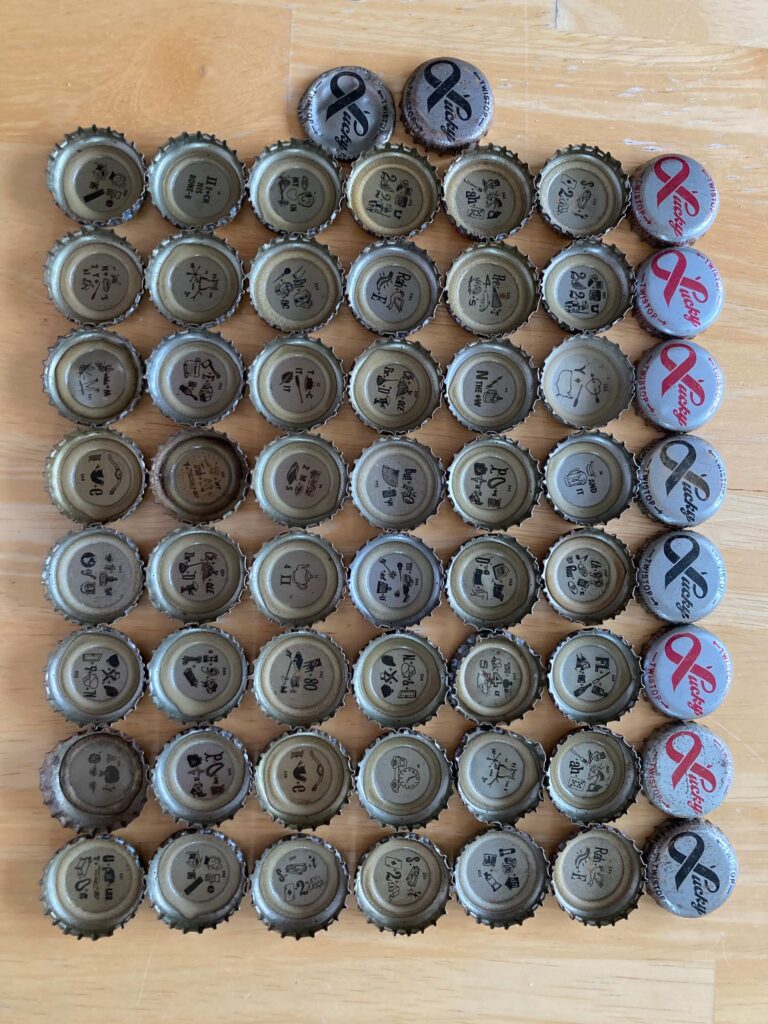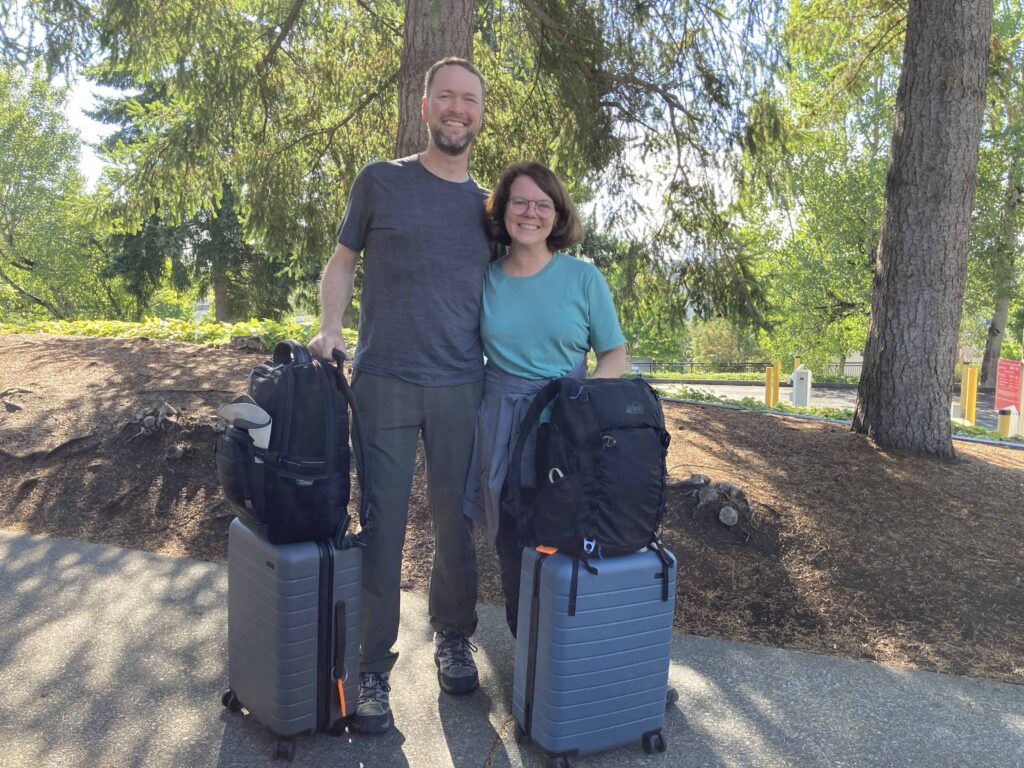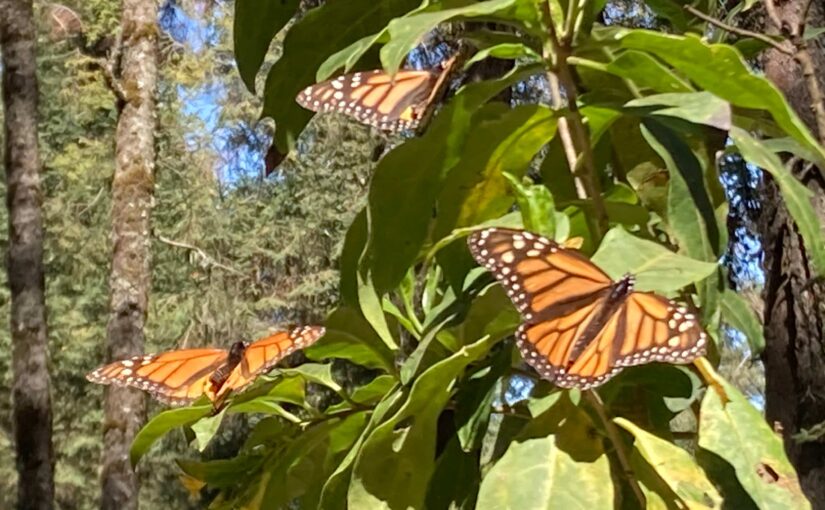My wife and I sold or gave away 98 percent of our belongings. Our dream to be full-time nomadic travelers took flight in July 2023––a goal we never thought possible until we fully embraced minimalism.
In her popular book The Life-Changing Magic of Tidying Up: The Japanese Art of Decluttering and Organizing Marie Kondo is adamant that a successful minimalist life only can be achieved if a person does the decluttering all at once and not a little at a time. My experience was the opposite.
My metamorphosis from a self-described “collector of collections” to a minimalist took over three years to achieve through several stages. Small incremental reductions of what I owned, in turn, resulted in small but noticeable increases of freedom and control in my life. In fact, it changed who I was. While a caterpillar physically changes, I evolved internally, honing my values and perspectives.

Like a caterpillar becoming a butterfly, I progressed through four stages to become a minimalist.
Each stage motivated me to make further (and often bigger) reductions in possessions and commitments resulting in increased white space and contentment in my life. A virtuous cycle.
Egg Stage: Start small, but discard enough to notice (and then notice!).
I started with the low-hanging fruit––I culled my closet, shoes, and some books. I disposed of enough to notice the freed up space. My drawers closed easier, my hangers had elbow room, and my shelves could breathe a little. It felt great and a little freeing to take a car load of boxes and bags to the nearby donation center.
Noticing how great this felt, I was motivated to do more. I went after our basement and attic storage areas––they were full of large plastic bins and boxes neatly stacked on shelves or in rows (reflecting years of storage management efforts). Again, I didn’t do it all at once, but I culled enough so that the empty boxes, bins, and shelf space after each round would continue to motivate me.

In this “egg” stage, I passed over the vast majority of my possessions because they either had sentimental value (awards and keepsakes), emotional value (gifts and family heirlooms), functional value (tools, supplies, clothes), perceived rarity (collectibles), or perceived monetary value. At the end of this stage, my past self would have stopped––some culling and a car load or two of donations, creating some temporary space until the clutter returned. But this time I used the momentum from this stage as the start of true change.
Larvae Stage: Devour knowledge about minimalism and keep iterating.
Before I could tackle the “harder” possessions, I needed to learn more about the benefits of minimalism and gain tried-and-true techniques that worked for me. I read several books and blogs, listened to podcasts, and watched YouTube videos taking in many different perspectives on achieving a better life through minimalism.
There are many different approaches to minimalism. While I gleaned some valuable ideas from most of them, Fumio Sasaki’s book Goodbye, Things: The New Japanese Minimalism resonated most with me. This book provides specific techniques for minimizing every type of possession. While I found he went a bit further than I did in my downsizing, I appreciated his thorough approach to the subject.
Finding the right voices that teach and inspire you is an important step in advancing your minimalism skills. I felt stronger knowing there is a supportive community and that I wasn’t alone in wanting the benefits of owning far fewer possessions than most citizens of developed countries.
As I learned new techniques and challenged my mindset, I iteratively returned to my closets, drawers, shelves, and storage with a fresh perspective and continued to make progress.
Pupa Stage: Ask yourself tough questions and let the answers change you.
As I advanced in my pursuit of a simpler life with fewer things, I needed to ask myself tough questions about who I was, what was important to me, how I let external pressures drive my internal decisions, and what were my expectations of the things I owned.
Asking myself Marie Kondo’s famous question about whether something sparked joy didn’t work for me. I found it too easy to confuse any “joy” I felt for a possession with the fleeting enjoyment of a shiny new object––that proverbial “new car smell.” Sometimes I needed to get rid of something even if I really liked it. On the other hand, important possessions I used everyday didn’t spark joy and they didn’t need to. They just needed to do their jobs.
Instead, I found that I needed to ask myself different questions depending on the item in my hands. The six tough questions below helped me identify what I wanted to change in myself in relation to what I owned.
- Do my emotions connected to this item exist only because I possess it?
- Do my family and friends really care if I let go of this thing they gave me?
- If I let go of these excess clothes, do I care if people see me wear the same clothes on a frequent basis?
- Is this possession an investment or an expense?
- Can I borrow or rent this item instead of owning it?
- How do I handle new items that come to my doorstep?

Warren Miller and watching his ski movies as he narrated them
These questions exposed my underlying beliefs, emotions, and societal pressures I attached (often subconsciously) to my possessions and impeded my ability to let them go. The answers to my 6 tough questions helped me change my relationship with the things I owned, freeing myself to make clear-minded decisions whether to keep or let go, and was the start of a newfound freedom.
I examine these six questions in more detail in this sister post.
I encourage someone on this journey to find the questions that work best for you. Asking yourself tough questions about your possessions to identify the underlying internal and external forces behind why you have what you have will help you hone your values and discard items that are not in alignment with those values.
Adult Stage: Ready to fly
I became a minimalist long before I pared down to the amount that I needed to meet my nomadic travel goal. My mindset and values completed their metamorphosis about 8 months before my belongings and commitments reflected that change.
Getting rid of a lifetime of possessions in a responsible way (selling, recycling, re-homing, donating, etc.) takes a lot of time.

For example, my wife and I culled, scanned, and then disposed of all physical photos except our small wedding album. It took days of hard work, but we are now enjoying the fruits of this labor by having immediate searchable access to over 7,000 photos. We enjoy and share these old photos far more than we ever did when they were stored in albums and boxes in the basement.

It was at this stage where I was able to tackle the hardest downsizing as I had the mental tools and fully understood my values in regards to my possessions. The emotional, sentimental, societal, and other belief barriers were no longer preventing me from taking action. Scanning in our hard copy photos ourselves and taking nicely laid out photos of keepsakes, awards, our kids school artwork, and other emotional and sentimental items (e.g., my bottle cap collection and autographed Warren Miller program) helped ensure I retained a record of the memories that these items represent and why I was keeping them. Looking at these and our other photos helps me reap a bigger memory dividend––the best return on investment we can achieve in life.
My wife and I completed our downsizing in July 2023, and now we travel the world full-time with a backpack and a carry-on each. My wife Launa shares poignant observations from our travels on her blog at Launa At Large where you can sign up for her thought-provoking electronic postcards. We love our freedom and the calming white space that minimalism has brought to our lives.

Thanks for reading! If you would like to be notified of new posts or updates from Living The FIgh Life, please subscribe below. I am an inconsistent blogger (hey, I'm retired!) so this is the best way to be notified of new content. Cheers!
![]()

Just discovered your website, and after having researched minimalism for some years now- I find your thoughts very refreshing!!
One question for you- what did you use to scan and organize your photos? And how are you able to look them up easily? That sounds so freeing!
Thanks for all that you do and inspire!
Hi Alison, thanks for the kind words! I have been thinking about doing a post on scanning our photos as my wife and I learned a lot in the process. We currently use Google Photos to access our photos (though I’m sure there are other good photo services). I like being able to download a full copy that my son keeps on his server as an extra back-up at his house, plus a copy on a hard drive in storage and of course the copy in the cloud on the Google servers. We can search by location, keywords like boat, Christmas tree, desert, or by person and quickly locate our photos if we didn’t recall the date of the photos we were looking for. We bought an Epson FastFoto FF-680W. The key was batching our photos by month and year so they stayed closely in chronological order and giving them a location in the file name. For important events that occurred in the same month we did some edits to the dates in Google Photos so the baby shower showed up before the birth. We also did a lot of culling before the scanning to get rid of the extraneous photos (some decluttering if you will :-). We learned that hiring a service would make chronological more difficult as they required photos batched by size and any chronological markers had to be added cards with dates that would be scanned too. The companies would not work well with glue residue from pulling out of albums, but by hand-scanning I was able to coax the scanner into scanning all but a very small handful (that we then took photos of if we cared about them). There are lots more details, but hopefully that helps answer your questions. Cheers!
That’s amazing and so thorough!! Thank you for the detailed response, this is super helpful!!